Exploring the Big Island off the beaten path: Puna
After 10 days in Hawaii and Oahu, we reflect and provide our best answer to the question: “How to explore the Big Island off the beaten path?” We loved our 7 days on the Eastern side of the island, in and around Puna. While it lacks expansive white sandy beaches, Puna is filled with local culture, adventure and amazing natural wonders.
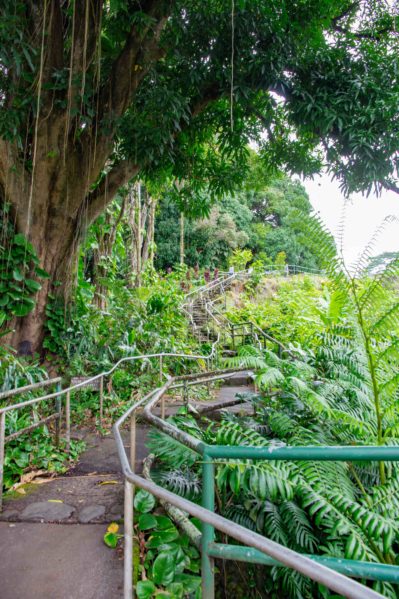
While we are known for going a bit off the beaten path for our travels, I feel like we took it to the extreme with our Hawaii trip. Every time we talked to someone who had traveled to Hawaii, the conversation went something like this:
they would ask, “Oh, so you are going to Maui, right?”
Us: “Umm.. nope, Oahu and Hawaii”
“Oh, well I guess that means you will definitely stay on Waikiki”
Us: “Ehh, we decided to skip the crowds and stay in Ko Olina”
“Well, at least you will enjoy gorgeous white sand beaches in Kona”
Us: “Probably, but we are spending 7 days in Puna”
“Where?”
Even with the explanation of our Hawaii goals: hiking around volcanoes, seeing lava, and snorkeling (ie not shopping or laying on a beach with an umbrella drink), the conversation often ended with an awkward pause. However, I remained confident in our decisions. I will admit that we made two unusual choices regarding the first leg of our Hawaiian adventure.
- We did not stop in Honolulu, and just kept flying straight on to Hilo (we later came back to Honolulu for a three day layover)
- We spent half of our time on the Hilo side of the Big Island
Oahu and Kona are the typical Hawaiian tourist spots, attracting visitors by the busload with their beautiful beaches, amazing snorkeling, luxurious shopping, and constant alohas, but I believe we enjoyed a true cultural experience during our stay off the beaten path on the Big Island. We acquainted ourselves with typical elements of Hawaiian life that differed from the mainland, namely, indoor bugs, daily rain fall, scampering lizards, questionable A/C, and mayo on all the food.
Okay, I jest. The parts of Hawaiian life that stood out the most were the sense of community and openess. They use a term ohana, which is family, but it felt like everyone on the island was family. We were obviously not locals, and yet the locals greeted us with a warmth you read about in tales of a bygone era in American living.
We definitely felt our experience on the Big Island was a true representation of what we would experience living in Hawaii, especially compared to the theater of staying on a resort. Don’t get me wrong, we enjoyed a few days at the resort, but it wasn’t the local experience we normally seek, when traveling.
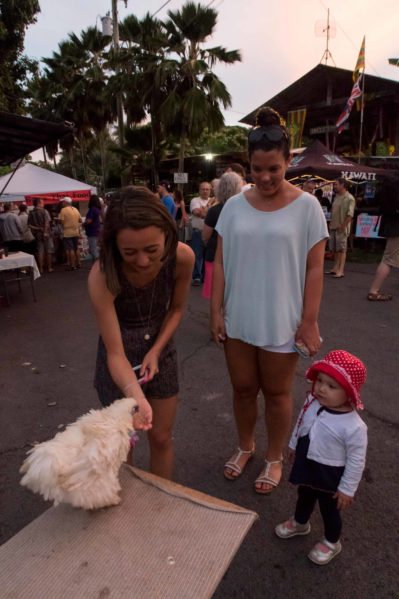
Meeting the Hula Chickens at the Night Markets
Much of our experience in the Puna district was organic. As we engaged with the locals, they happily shared their favorite places, and their recommendations provided quite the holiday. We tired of hearing it, but we have to agree with the guidebooks and fellow travelers. The Puna area provided an opportunity to experience the “real” Hawaii.
If you want to learn about Hawaiian culture, receive leis from new friends instead of ticket purchases, rub elbows with the locals over street food, and search for beautiful fish in secluded tide pools, you should travel off the beaten path on the Big Island, and explore Puna.
If not, no judgement. Sometimes we seek vacations for relaxation, naps, and maybe a little bit of gluttony – that’s totally fine. You should find a gorgeous resort, and reserve your beachside cabana. We have an excellent recommendation on Oahu. But if you are interested in learning about Hawaii, if you want to get off the tour bus, or if you want to have a conversation with someone who isn’t being paid to talk to you, keep reading.
7 Things to Do Off the Beaten Path on the Big Island
Uncle Robert’s Night Markets
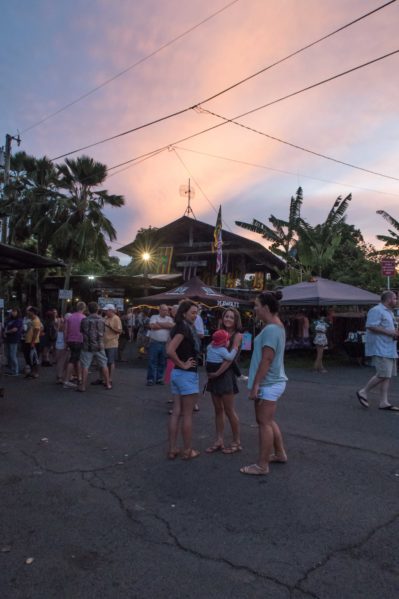
We ventured over to Uncle Robert’s Night Markets, after meeting Tom and Penny. They moved to Hawaii from the mainland, and mentioned the night markets as the giant family-friendly party on Wednesday nights. The directions from our Airbnb rental were too good to pass up. “Exit the neighborhood. Turn left, and the road ends at the party.”
As an added bonus that road happens to be the Red Road scenic drive between Kapoho and Kalpana. I was not the best choice for our easily car-sick passengers; however, scenic is an understatement. Amazing views are around every bend, and every clearing in the trees produces magnificent coastline.
Arriving at the Night Markets early, we realized the truth in Tom and Penny’s statement that “everyone goes.” The markets officially start at 5pm, and when we pulled up at 5:30, the crowd already numbered in the hundreds, there was a band playing, with a parking lot filled with tailgaters. We found a spot on the black lava rock parking lot, and made our way toward the sound.
As we approached the markets, we must have looked a little scattered. We had no idea what to expect and it was rather overwhelming as we forced ourselves through the packed, smoky, vegan-friendly stalls. Fortunately, we encountered a slew of welcoming locals, backpackers, and yogis (unconfirmed but very likely from prevalent patchouli, Nag Champa, and dreadlocks).
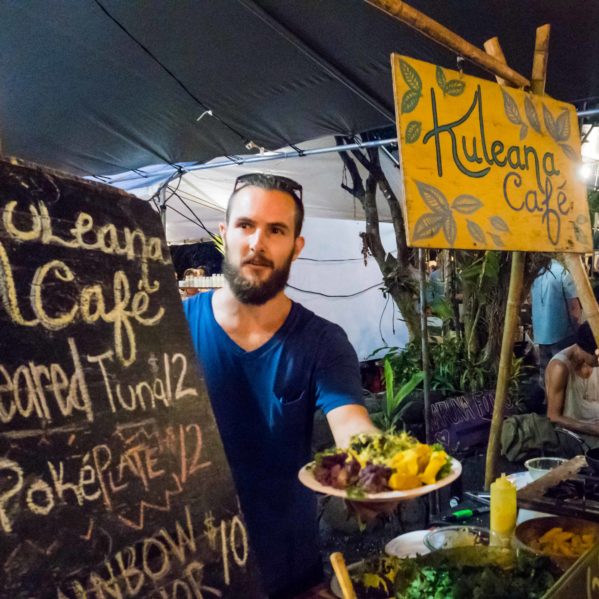 The numerous stalls sold everything! We found homemade soaps, empanadas (we ate three!), build your own salads, and fresh coconuts by the rack. JZ’s favorite quote of the trip is the local boy up-selling one of the regulars on a rack of coconuts. When the backpacker declined because he had no car, the boy quickly responded, “You can hitch with a rack of coco, man!”
The numerous stalls sold everything! We found homemade soaps, empanadas (we ate three!), build your own salads, and fresh coconuts by the rack. JZ’s favorite quote of the trip is the local boy up-selling one of the regulars on a rack of coconuts. When the backpacker declined because he had no car, the boy quickly responded, “You can hitch with a rack of coco, man!”
Upon entering, JZ and I first sampled what we later referred to as “bootleg booch.” It was a home brew kombucha, chock-full of an eye-watering, gasp-inducing amount of raw ginger. As I tried to subtly indicate that we should walk away (in between burning gasps), JZ somehow interpreted my grunts a purchase request for a largish bottle of liquid fire. Opting not to risk botulism, I ceased my consumption after one shot. JZ, on the other hand, committed to finishing the bottle, and carried it around with us on subsequent adventures.
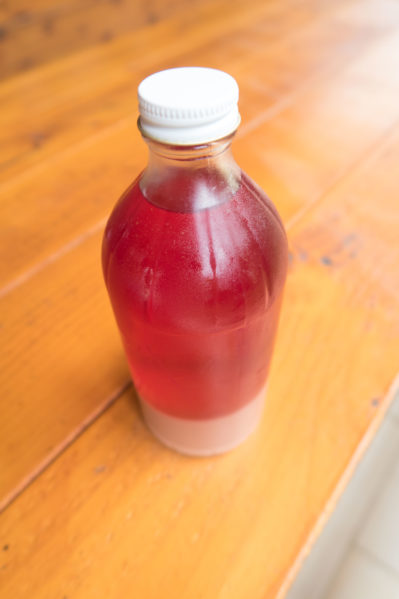
Our bottle of bootleggers booch (kombucha). The grayish lower half is all of the raw ginger that settled to the bottom of the glass.
We recognized a few of the vendors from the Hilo Farmer’s Market that we visited that morning, and we saw familiar faces from the Aloha Leuha cafe running their stall. The atmosphere was much more natural than the Hilo market, with all of the vendors chatting with their neighbors. It really did feel like a giant party. As an added bonus, if you walk past the opposite end of the parking lot, you end up at our next recommendation, Kaimu Black Sands Beach.
Kaimu Black Sand Beach
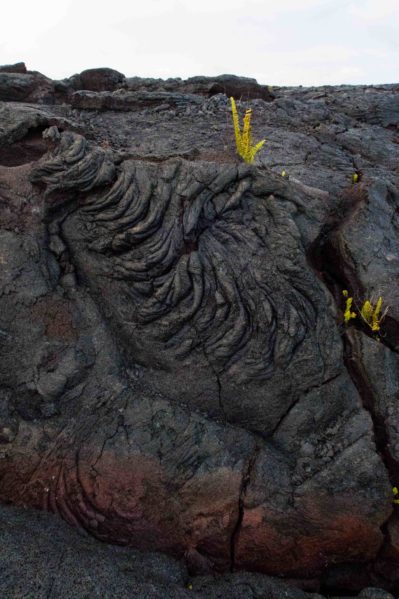
Don’t worry, that’s not the beach. That is part of the vast lava field that you walk across to the beach. While brief, the walk is awesome. You can imagine the power of the lava, slowly and steadily creeping across the beach and into the ocean, destroying everything in it’s path. Now the cooled lava is cracked and crumbling, creating a gritty black sand. The shoreline is very narrow and the sand and stones are quite rough on the feet, so I wouldn’t recommend it for a “day at the beach” type trip. However, we enjoyed a glimpse into the life cycle of a volcanic beach.
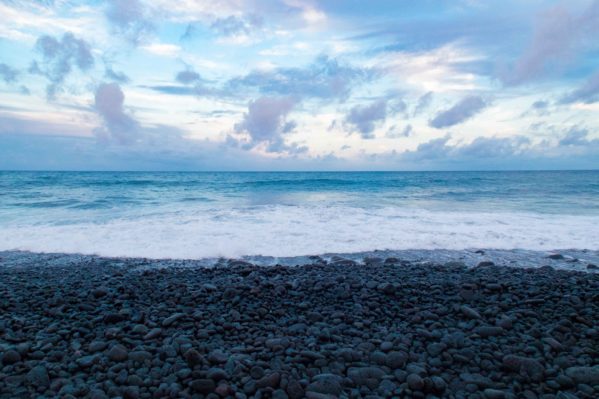
There are lots of interesting formations, and new plant life springing about. It really is something to see, especially when you realize that the active lava flows came through Kalapana and partially destroyed the town in 1986. As I approach 30, I have an increased respect for how young a 30 year old beach really is! This was a wonderful sunset walk as part of our adventures at the Night Markets, and so beautiful it would be worth a visit even if you don’t make the markets.
Kapoho Tide Pools
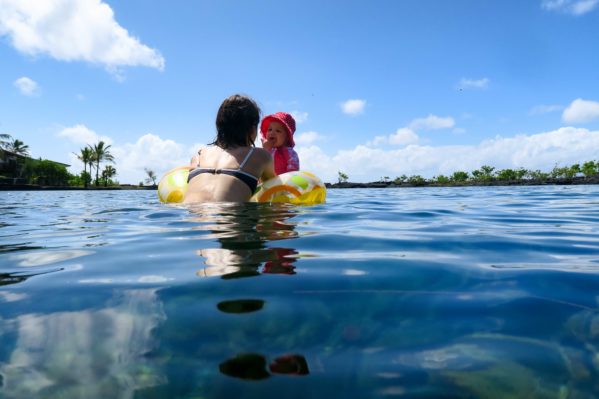
These volcanic tide pools are a beautiful and peaceful alternative to the packed beaches in Kona. We lucked into an Airbnb in the neighborhood, and after driving past a few rows of the “visitor” parking, followed some of locals to take a dip. The water is clear, blue, and very well inhabited by tropical fish. Do keep in mind that it is not a sandy beach, so water shoes are a must to safely navigate the rough and occasionally sharp volcanic rocks.
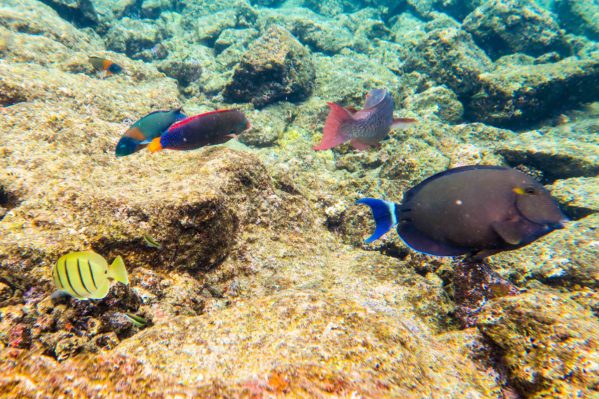
While no pods of dolphins take refuge here, there are turtles, and we enjoyed some of our best and closest fish encounters in the tide pools, Another great part of the tide pools was the the people encountered. It was here we met Tom and Penny, who recommended the night markets. They saw us swimming around, and told JZ he was missing some of the best snorkeling. Naturally, he looked confused in response so they hopped in to give him a guided tour. CZ and I watched from a mini-island of lava rock, as they swam out to the breaking waves. They pointed out the little cave usually housing a blowfish, and told us where the local turtle resides.
Another nice feature of snorkeling at the tide pools is the space. There were enough other swimmers to make me feel comfortable I wouldn’t be pulled out to sea unnoticed, and few enough swimmers that there weren’t any accidental collisions. This annoyingly happened ALL OF THE TIME in Kona, with distracted snorkelers swimming into each other.
Drive Down the Red (Kalapana-Kapoho) Road
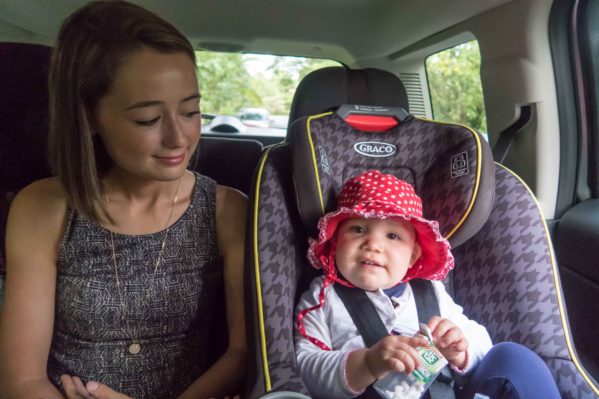
While we are not much into road trips, because car-sickness. This route was worth the risk, and it is something that you must experience to truly appreciate. Our photos don’t do this justice. because JZ drove, while CZ and I downed tic-tacs in hopes of staving off further nausea. When I did look around, it felt like we were driving a Jeep through Jurassic park, under the huge, dark tree canopy above us. The ride felt even more adventurous as the road dipped and curved almost like a roller-coaster.
Unfortunately, we did not have time for another trip down the red road, but we do have a strategy for when we return. We recommend making a day of it, and starting at the tide pools for a a morning snorkel. Then head down the Red Road Scenic Dive in short segments, making frequent stops for photos and play. This gives the locals an opportunity to pass you, and if you time it right on a Wednesday, you will finish the trip at the start of the Night Markets.
Go to church
Church is often one of the big highlights from our travels. Not only do we recharge with our weekly worship, it gives us a glimpse into everyday life with local communities. You can chat about the weather, talk about the recent lava flows, and ask where people are headed for brunch. Churches are a prime place to meet friendly and welcoming people, happy to share what they love about their hometown. Pay close attention to repeated recommendations for local sites and restaurants; these are often some of the best local experiences.
We loved the simplicity and welcoming spirit at Sacred Heart in Pahoa, and it was the first place we encountered Aloha. I am bit of a cynic, and I didn’t really buy into the whole “spirit of Aloha” that the guidebooks sell you. I thought it was similar to other cultural traditions that become commoditized in the presence of wealthy tourists (like the resort luaus). But Aloha is not the forced smile of someone working in hospitality and dealing with excited tourists all day. It is a genuine helpfulness, openness, and good-will experienced most strongly in smaller communities. We discovered it for the first time, as they presented all newcomers at church with yarn leis during a welcome song. The hand woven leis were a symbol of the goodwill and friendliness we encountered here.
Find wild orchids
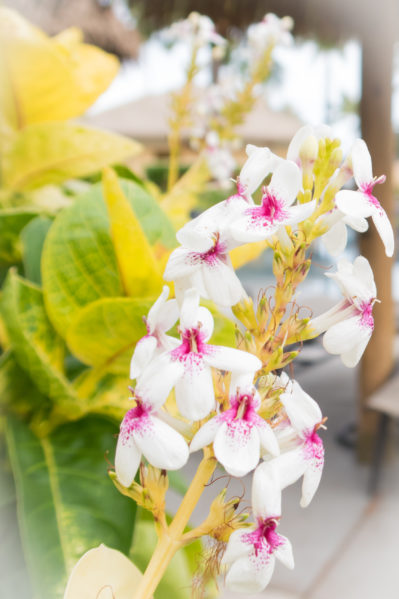
Yes, you could just go to the orchid center, but it’s actually very possible and much more thrilling to seek out orchids on your own. Before you go snorkeling at the Kapoho tide pools, wander around the neighborhood, and admire the orchids growing on the trees. We saw several beautiful, colorful plants attached to larger trees in yards and empty lots. One of the upsides of the daily rain showers and humidity is a perfect environment for these gorgeous flowers!
Feast on Kalua Nachos
In all honesty, most of the food in Pahoa did not impress us. It fit one of two main types: dripping in grease and dunked in a sugary sauce, or the occasional raw vegan establishment. We are all about raw vegan in moderation, and enjoyed some seriously awesome salads at Uncle Roberts Night Markets. However, after a long hike or swim, we crave super protein (aka meat)! We noticed the Aloha Lehua Cafe because it was next to the Longs Drugs we stopped at for water shoes. The building is actually an old KFC so we entirely missed it when driving past, but we found lots of promising reviews online. We were intrigued, and made plans to return. Their house specialty is Hawaiian nachos, topped with delicious luaha pulled pork, tomatoes, and their special sauce. Aloha Lehua also has a booth at the Night Markets, so you have options for when grab your Hawaiian feast, and you also have another reason to attend the Night Markets!
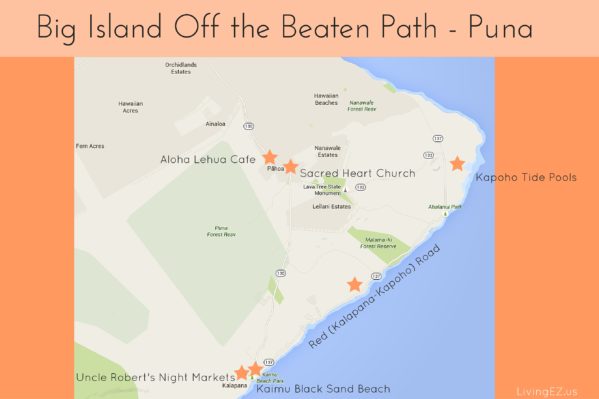
Know before you go – Puna:
- The skies open up and pour down huge, heavy droplets, for about 30 minutes at least once a day. The remainder of the day is beautiful. Tropical rain is not accompanied by grey skies and overcast weather, it is short and sharp – leaving behind incredible humidity. We never let the rain deter our plans, and luckily avoided getting caught in any down pours. Worst case, bring an extra change of clothes and ziploc bag for your electronics.
- It is an amazing part of the island to stay on, but you pay for the secluded beauty in drive time. Everything not on our list that you might want to see, such as: volcanoes, mountains, beaches, and Hilo is at least a 45 minute drive away.
- You need a map and Google Maps. You need to know where you want to go and how to get there, as most tourist activities are entirely self-directed. We generally rely heavily on Google Maps to navigate our travels and Puna was no different in this regard. However there were a couple times that cell service dropped out. JZ recommends taking a screenshot on your phone once you pull up the route, just in case you lose signal during your trip.
*We used international roaming with our Australian mobile plans, which may explain our signal issues.
Whew, this is a doozy of a post – but we absolutely loved our time on the Big Island, and think that people who are truly interested in Hawaiian life should spend at least a day in Puna to round out their trip!
Pin this for future travels:
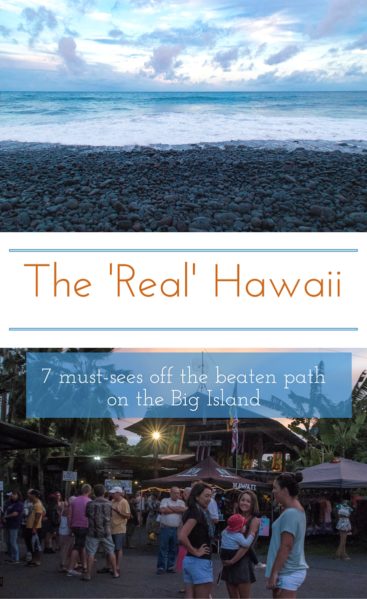
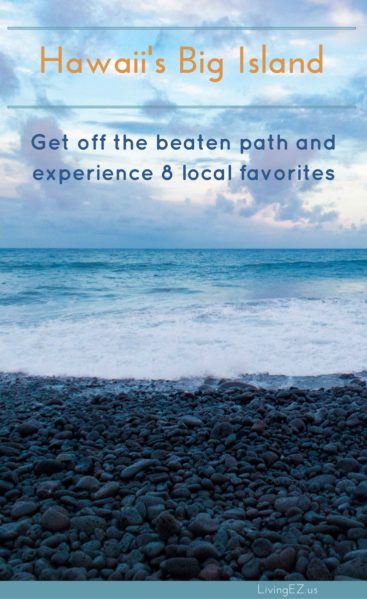
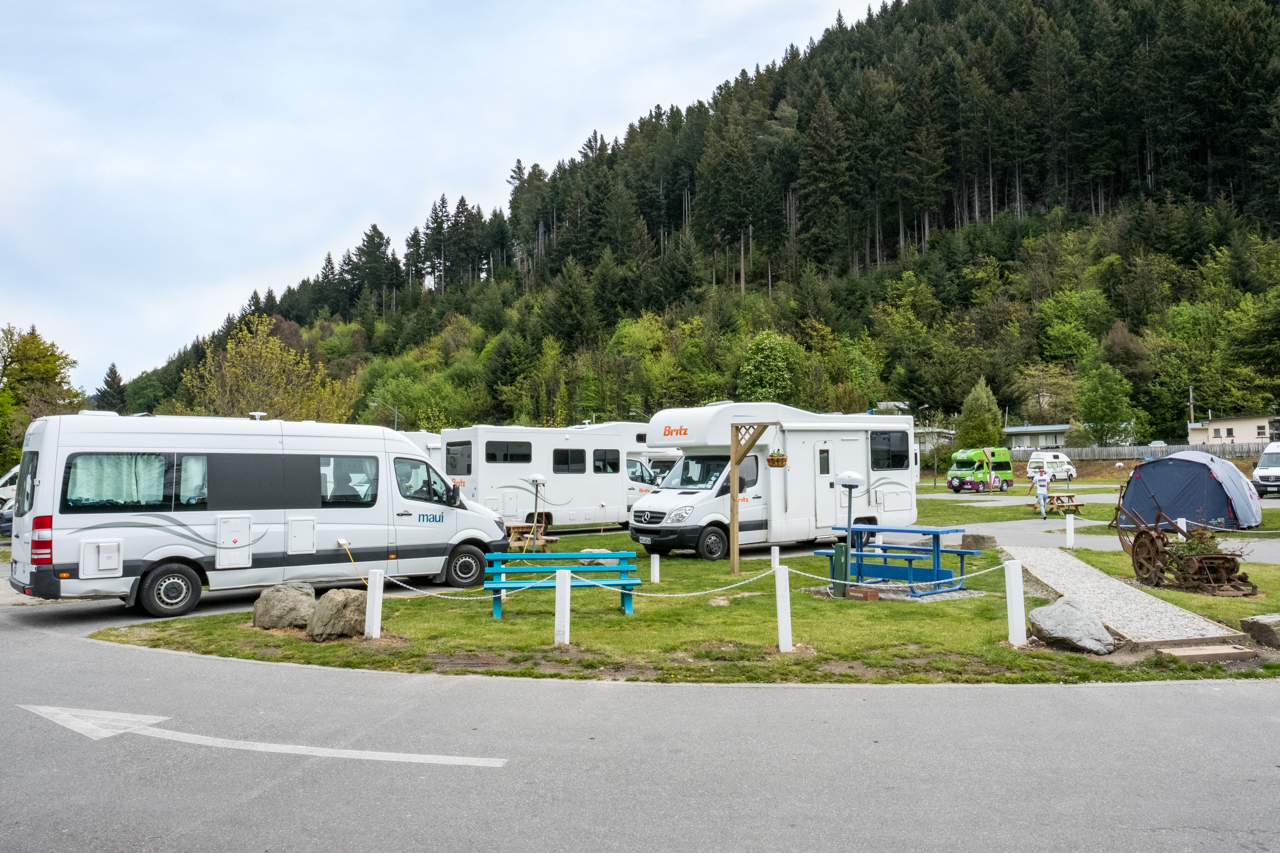
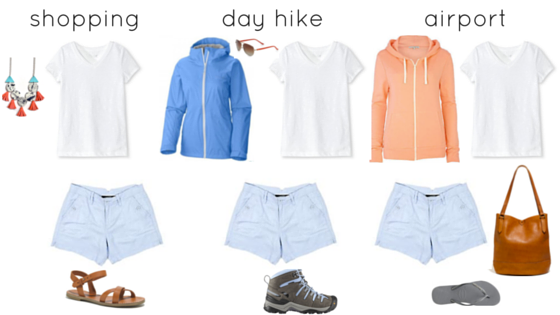
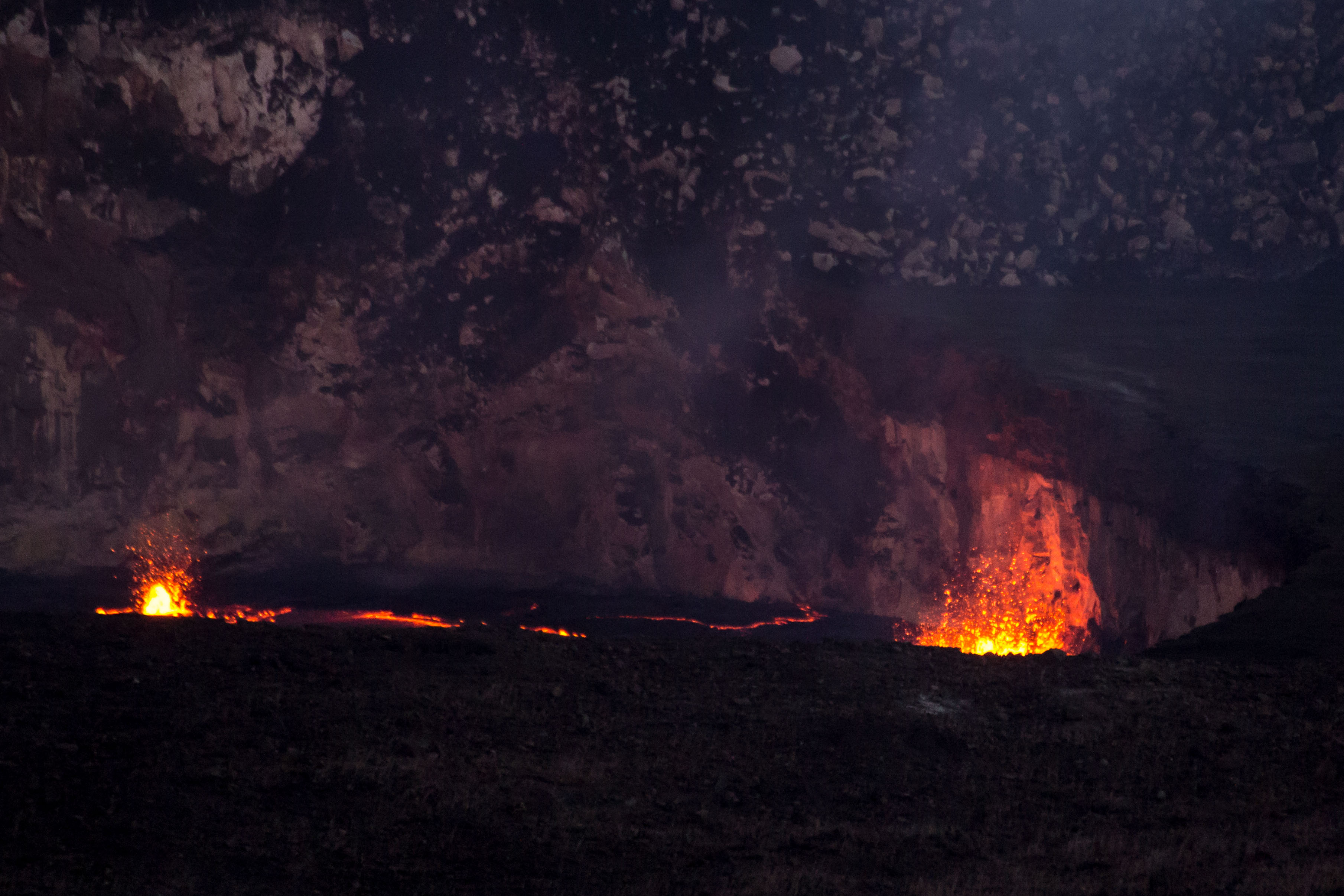
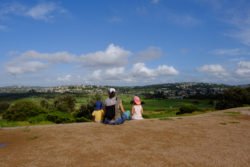
Was this before or after the lava flow?
Hi Nancy this was before the recent large flows that occurred last year. Cheers, JZ
Yupp, it’s true folks! Big Island is my favorite, and I’m working on moving there for keeps. The two things in the post that I can “update” here are: Kapoho Tide pools are no longer, but a big new black sand beach call Pohoiki in addition to Kaimu (above) was created by the 2018 lava flow. And the Aloha Lehua Cafe went out of business a while ago, now been replaced with a Puna favorite: Luquin’s Mexican. Their original burned down several years ago (not their fault!) so they reopened in the “old KFC”.
After doing some research myself: it appears that East Hawaii on the Big Island is the least expensive area to buy. I entered “Puna” into sites like Zillow and Trulia and found tons of nice homes between 200k and 250k, some even come fully furnished, so the moving part is easy! What’s neat is that it’s still only a max 90 min drive to the resort areas on the Kona side, though I’m attracted to the wilder coasts of Puna myself. I’ve also read that the population on Big Island is much less dense than on the other islands and they say that people really live with Aloha in Puna: open, friendly, no rush, respectful to all cultures, even seniors and us regular, not-wealthy folks. Sigh. I’m working on the dream and I will get there!
Thanks so much for the update. We also still have those Big Island dreams!
Sad news on the loss of the tide pools and those nachos.